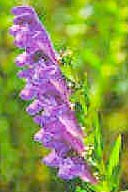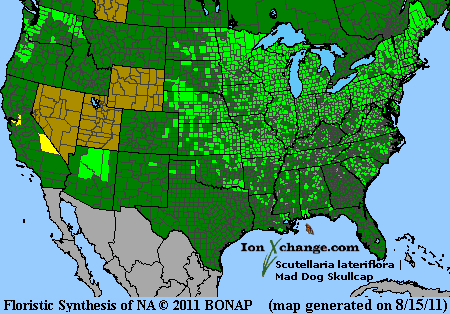 Loading... Please wait...
Loading... Please wait...- Home
- SEEDS
- SEED MIXES
- BUY PLANTS
- Info Request
-
Educational Videos
- Greenhouse Transplanting Demonstration
- Native Seed Cleaning demonstration at Ion Exchange Native Seed and Plant Nursery
- Attracting Butterflies
- Bidens - Bidens cernua Harvest Video
- Big Blue Stem Harvest
- Butterfly Milkweed Video
- Button Blazingstar - Liatris aspera Video
- Buttonbush - Cephalanthus occidentalis Video
- Canada Anemone - Anemone canadensis Harvest Video
- Cardinal Flower - Lobelia cardinalis Video
- Control Burn - Wildflower Field
- Cream Gentian - Gentiana flavida
- Culver's Root - Veronicastrum virginicum Video
- Cup Plant - Silphium perfoliatum Video
- Dormant Seeding | Planting
- Earthyman's Favorite Wildflowers Video
- Eco-Friendly Golf Course Seed Mix
- Floating Islands
- Fringed Loosestrife - Lysimachia ciliata Video
- Giant Yellow Hyssop - Agastache nepetoides Video
- Indiangrass - Sorghastrum nutans Video
- Iowa Prairie Partner Program
- Leadplant - Amorpha canescens (Potted) Video
- Meadow Blazingstar - Liatris ligulistylis
- Midland Shooting Stars - Dodecatheon meadii Video
- Native Plant Nursery Field Irrigation Experiment
- Nodding Onion - Allium cernuum Video
- Ohio spiderwort - Tradescantia ohiensis Video
- Old Man's Beard - Clematis virginiana blooms Video
- Oxeye Sunflower - Heliopsis helianthoides Video
- Prairie Spiderwort - Tradescantia bracteata
- Purple Coneflower - Echinacea purpurea Video
- Rain Garden or Water Garden Video
- Rattlesnake Master - Eryngium yuccifolium Video
- Riverbank Stabilization - Wetland Plants
- Rose Mallow - Hibiscus militaris Video
- Rosinweed - Silphium integrifolium Video
- Royal Catchfly - Silene regia
- Showy Tick Trefoil - Desmodium canadense Video
- Sneezeweed - Helenium autumnale Video
- Swamp Betony - Pedicularis lanceolata Video
- Swamp Milkweed - Asclepias incarnata Video
- Sweet Blackeyed Susan - Rudbeckia subtomentosa Video
- Tall Coreopsis - Coreopsis tripteris Video
- Urban Butterfly Garden
- Wild Bergamot - Monarda fistulosa Video
- Wild Geranium - Geranium maculatum Harvest
- Wild Goldenglow - Rudbeckia lanciniata Video
- Wild Petunia - Ruellia humilis Harvest Video
- Woodland Knotweed - Polygonum virginianum Video
- Yellow Coneflower - Ratibida pinnata Video
- Blog
- Resources
- Policies
Contact Us
Phone:
563-419-0837
or 563-535-7231
Email:
hbright@ionXchange.com
Browse Products
Add to Wish List
You Recently Viewed...
Our Newsletter
Product Description
Scutellaria from the Latin scutella meaning "dish-shaped", or a "a dish", referring to the appendage on the fruiting calyx. Lateriflorus is the Latin word for "flowering on the side".
| Sun Exposure | Prairie, Savanna |
| Soil Moisture | Wet, Wet Mesic |
| Bloom Time |
Summer, Fall July, August, September |
| Bloom Color | Blue |
| Max Height | 2 feet |
| Wetland Code | OBL |
| Germ Code | C(60) |
| Seeds Per Ounce | 65,000 |
Becoming somewhat less common throughout the Tallgrass region, prefers lake edges, sedge meadows and wet prairies. Violet to blue-violet flowers appear from June into August. Rarely grows taller than 3 feet.
The name "Mad Dog Skullcap" comes from the fact that early settlers once used a decoction of this plant to treat rabies. A strong tea was used as a sedative, nerve tonic and antispasmodic for all types of conditions including epilepsy, insomnia, anxiety and neuralgia. Larger doses are of an unknown toxicity, fatalities have been reported.
Edible Uses: Unknown
Medicinal Uses: A commonly used herbal medicine, Virginian skullcap is a very effective nervine that has traditionally been used in the treatment of a wide range of nervous conditions. Its tonic and restorative properties help to support and nourish the nervous system, calming and relieving stress and anxiety. Very little research has been carried out on this species, despite its long use in American and British herbal medicine. Research is sorely needed, and may reveal more uses for this valuable herb. The leaves are antispasmodic, slightly astringent, diuretic, nervine, sedative and strongly tonic. They are harvested in early summer and dried for later use. It is used in the treatment of various problems of the nervous system including epilepsy, insomnia, anxiety, delirium tremens, withdrawal from barbiturates and tranquillisers, and neuralgia. An infusion of the plant has been used to promote suppressed menstruation, relieve breast pain and encourage expulsion of the placenta, it should not be given to pregnant women since it can induce a miscarriage. This plant should be used with some caution since in excess it causes giddiness, stupor, confusion and twitching. The plant was once believed of use in the treatment of rabies, though there is no evidence to support this.
Herbal Uses: Unknown








